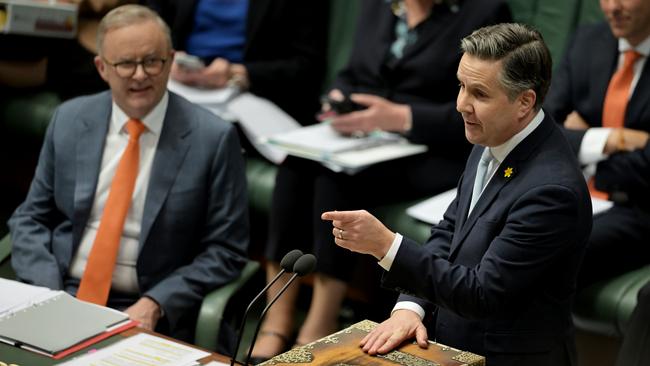HTA review outlines First Nations, pediatric reform and quick, cheap medicine
A review of Australia’s systems for accessing medicine has said it could slash waiting times for new treatments by 16 months in a majority of cases, proposing 50 reforms.

You can now listen to The Australian's articles. Give us your feedback.
A government review of Australia’s systems for accessing medicine has said it could slash waiting times for new treatments by 16 months in a majority of cases, proposing 50 reforms and an independent body to institute systematic change.
The Health Technology Assessment review comes after sustained criticism from pharmaceutical and medtech companies, and patients, that Australia’s process of approving new medicines and technologies was far too lengthy and bureaucratic, failing to meaningfully include consumers.
The HTA’s panel of medical experts evaluate what health technologies, including new medications, should be sold and funded by the federal government under the Pharmaceutical Benefits Scheme, the Medicare Benefits Schedule, the National Immunisation Program and the Life Saving Drugs Program.
The report, commissioned in 2022, was handed to Health Minister Mark Butler on Tuesday and distributed to the public later in the day. It received more than 250 community and industry submissions.

The Albanese government pledged to form an implementation group to review and carry out recommendations.
A companion review detailed in the Enhance HTA Report provided 10 extra recommendations to improve future consultation to keep the HTA modern. Pharmaceutical body Amgen’s recent Australian Patient Access Gap report found that for medicine’s greenlit by the TGA between January 2021 and April 2024, patients waited an average 591 days to access them through the PBS.
Only 20 per cent of medicines were approved on their first application; more than 40 new medicines have been left in limbo for more than 1000 days.
“The HTA review report is farsighted enough to be visionary, while being firmly grounded in the practicalities of the here and now,” Mr Butler said.
“The goal is faster access to the best therapies, at a cost that patients and the community can afford. Value for money remains paramount, because value is at the heart of patient benefit. Good reform must be jointly owned. Landing it will take time and the collective effort of governments, experts, patients and industry.”
The review found First Nations Australians were seeing inequitable access and recommended establishment of a First Nations advisory committee to hand advice down to departmental authorities. Children in need of pediatric care were similarly sidelined.



To join the conversation, please log in. Don't have an account? Register
Join the conversation, you are commenting as Logout